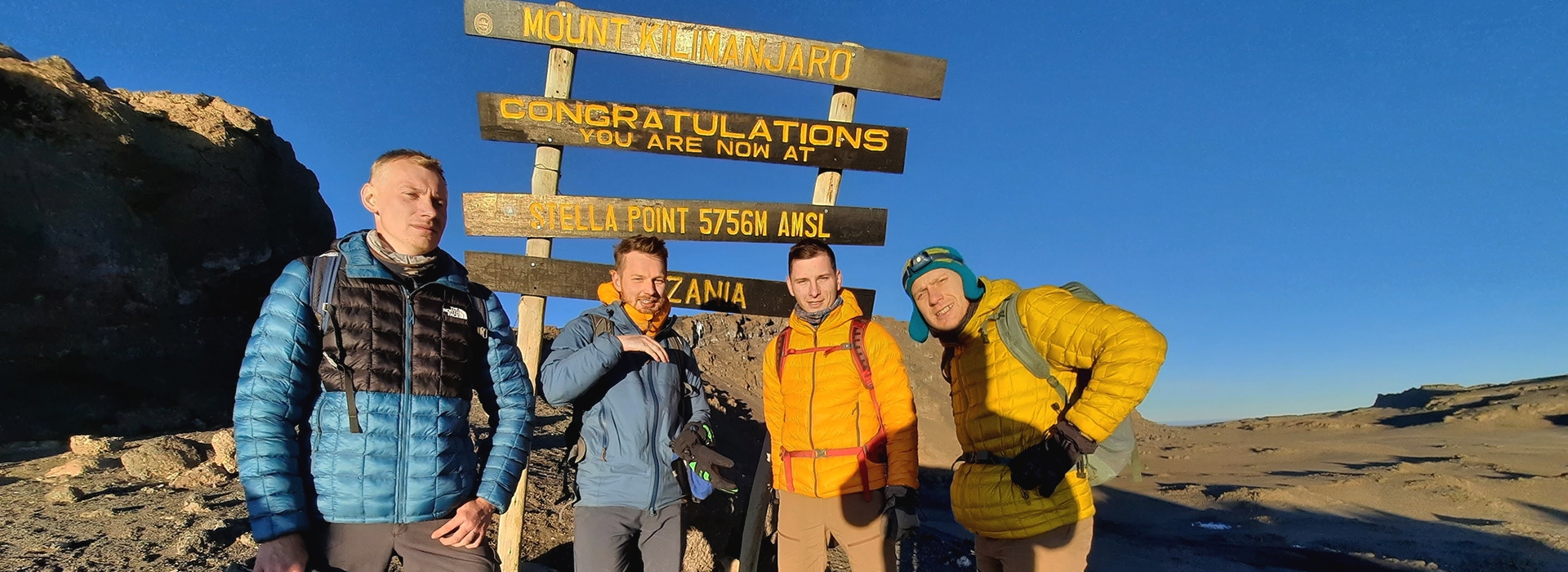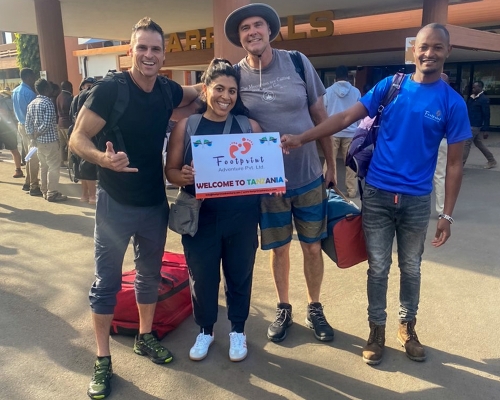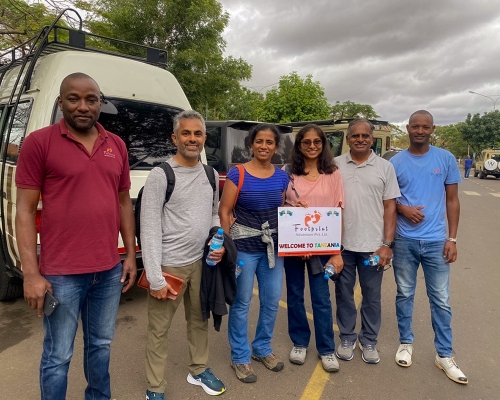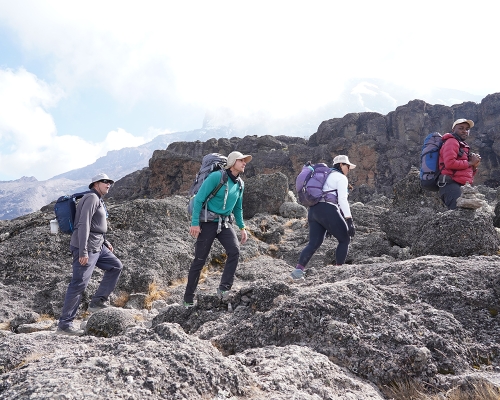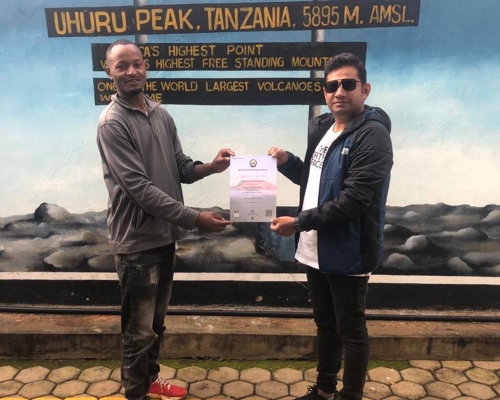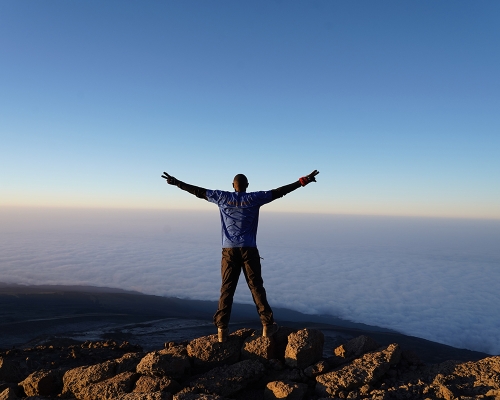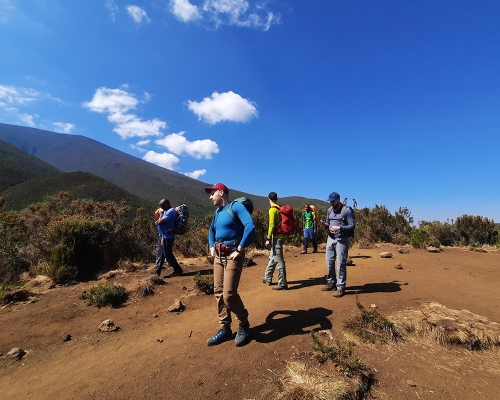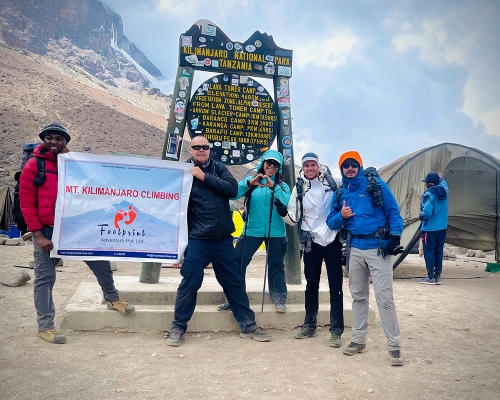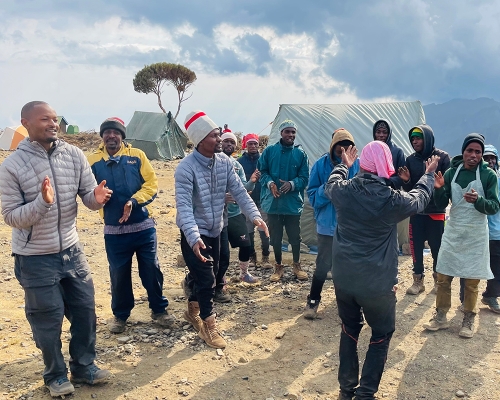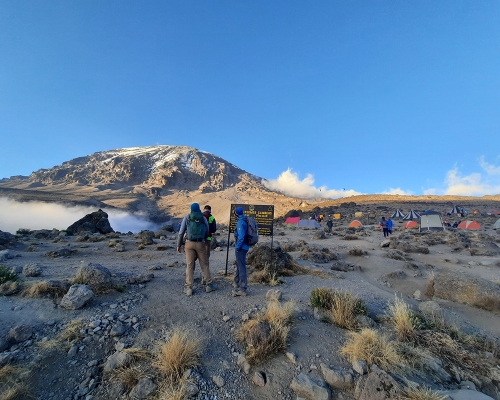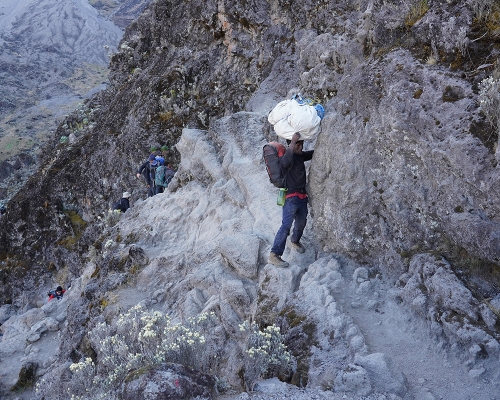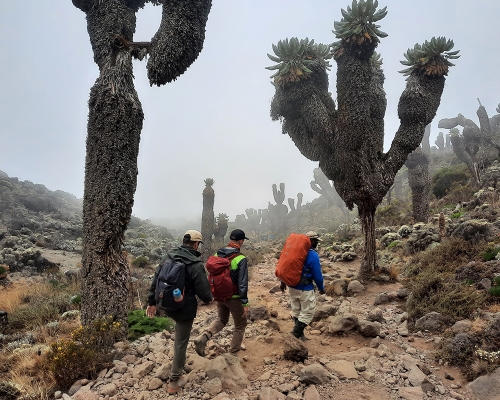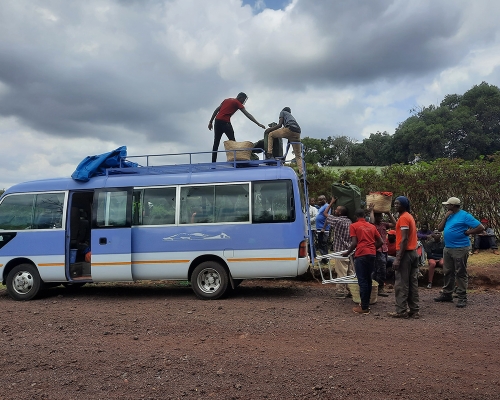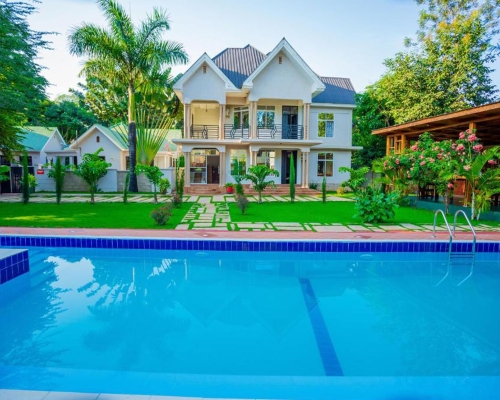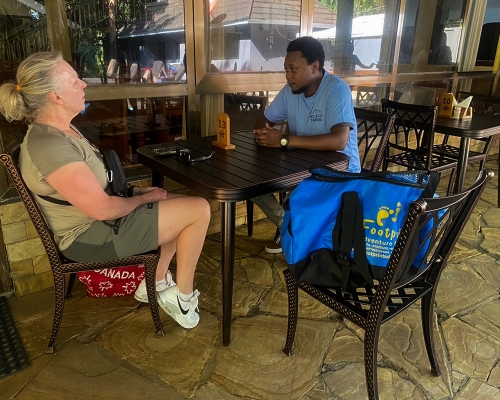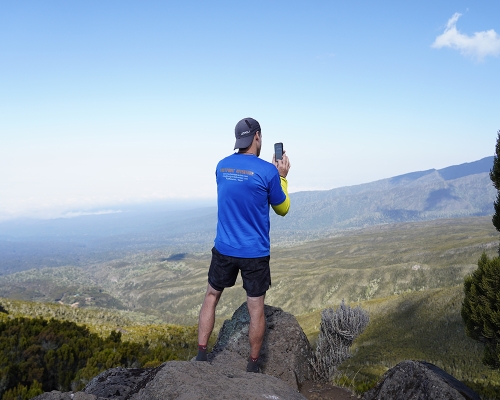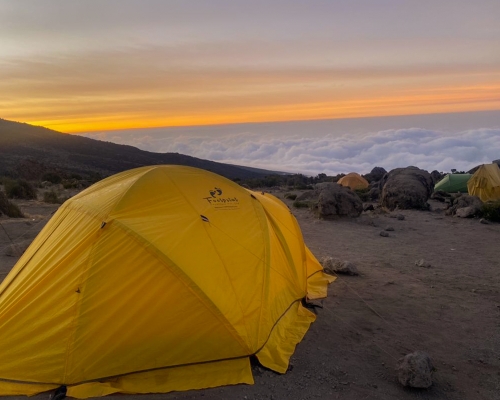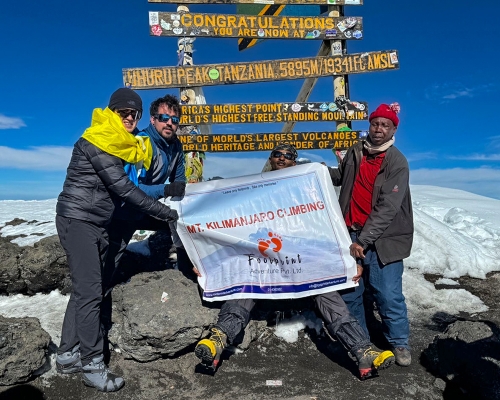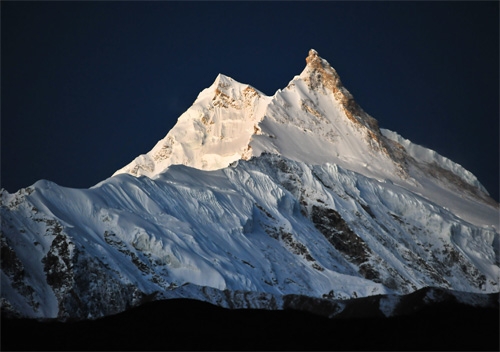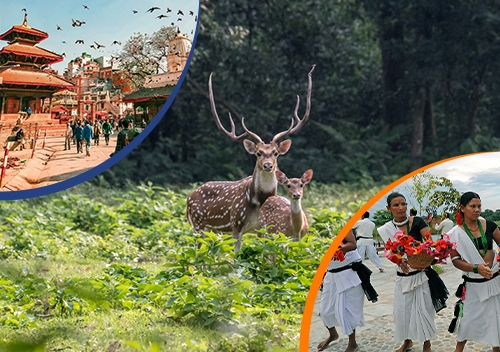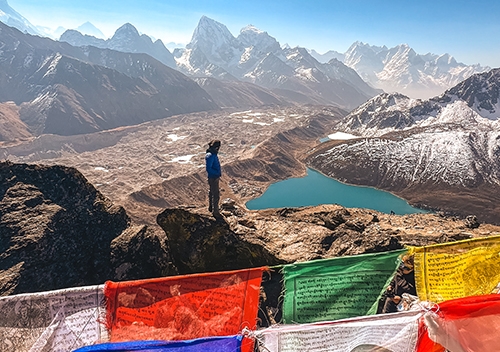Expert Recommendation
The reasons why Lemosho Route is always recommended by experts are numerous: it has a great balance of challenge and accessibility. This route is particularly fit for those climbers who value high success rates and a scenic journey.
- Scenic Advantages: The route takes you through lush rainforests, the Shira Plateau, and high-altitude deserts, offering stunning vistas at every stage.
- Acclimatization: Climbing is undertaken over either 8 or 10 days at Lemosho Route and this greatly helps in preventing the problem of high altitude sickness.
- Crowd Levels: The following is the western approach which makes it less crowded as compared to such other routes as the Machame or the Marangu, especially in the initial days.
Recommendations:
- Choose the 10-day itinerary for an easier pace and higher summit success rates.
- Travel with experienced guides who prioritize safety and proper acclimatization strategies.
The Lemosho Route combines adventure with safety and scenery, making it a top choice for climbers.
Difficulty Level
The Lemosho route is regarded one of the simpler Kilimanjaro routes due to its longer itinerary, which provides for better acclimatization. Hikers must still scale the Barranco Wall and climb sharply on summit night. Rather of trying to fit the climb into 7 days, the 8-day Lemosho climb has one of the best success percentages. The extra day allows you a shorter pre-summit day, which means arriving at base camp by lunchtime, fueling up with food, and tucking into your tent to relax before a difficult summit ascent beginning at midnight. There is no technical climbing required, although a decent degree of fitness is advised.
Popular Things to do in Kilimanjaro Lemosho Route
Tanzania is widely popular for wildlife safari and Kilimanjaro climbing especially. Besides this, beaches, friendly people, intriguing culture, amazing hospitality, the popular Serengeti National Park, and Kilimanjaro mountains. After the trek, exploring the Zanzibar Islands, beaches and drinks are other most fascinating things to explore during the Tanzania trip.
Best time to climb Mt. Kilimanjaro
Mt. Kilimanjaro lies in the equatorial region of the earth, so you don’t have to experience the extreme hot and cold across the year. Though, there are a few months which is the best time to explore the beauty of Tanzania and Kilimanjaro. Normally, the peak season for climbing Mt. Kilimanjaro starts from December to mid of March and mid of June to the end of October. The good part of peak season offers favorable weather conditions and the best time for hiking, trekking, and climbing. Also, the high season offers beautiful views of the sunrise from the top and amazing scenery. The hectic part of the prime season is that the trail gets crowded, and obviously, the peak season brings the many fellow travelers, and climbers, and the region gets crowded.
Kilimanjaro Climb via Lemosho Route Map
The Lemosho Route map visually explains the journey up Mount Kilimanjaro from the western side at the Lemosho Gate. It starts in the rainforest zone, full of life, and moves to the expansive Shira Plateau with its panoramic views of Mount Meru and the surrounding landscapes. Climbers continue up to the Lava Tower, an important acclimatization point, before dropping down to Barranco Camp. The famous Barranco Wall is a steep, but relatively easy, climb into the alpine desert zone, where Karanga and Barafu Camps provide the last resting points before the summit push. The final ascent to Uhuru Peak, at 5,895 meters (19,341 feet) above sea level, offers breathtaking views of glaciers and the African plains. The descent follows the Mweka Route, passing through Mweka Camp and lush rainforests, ultimately ending at Mweka Gate. The map also highlights Kilimanjaro’s five ecological zones—rainforest, heath, moorland, alpine desert, and the arctic summit—showcasing the diverse landscapes trekkers experience along the way.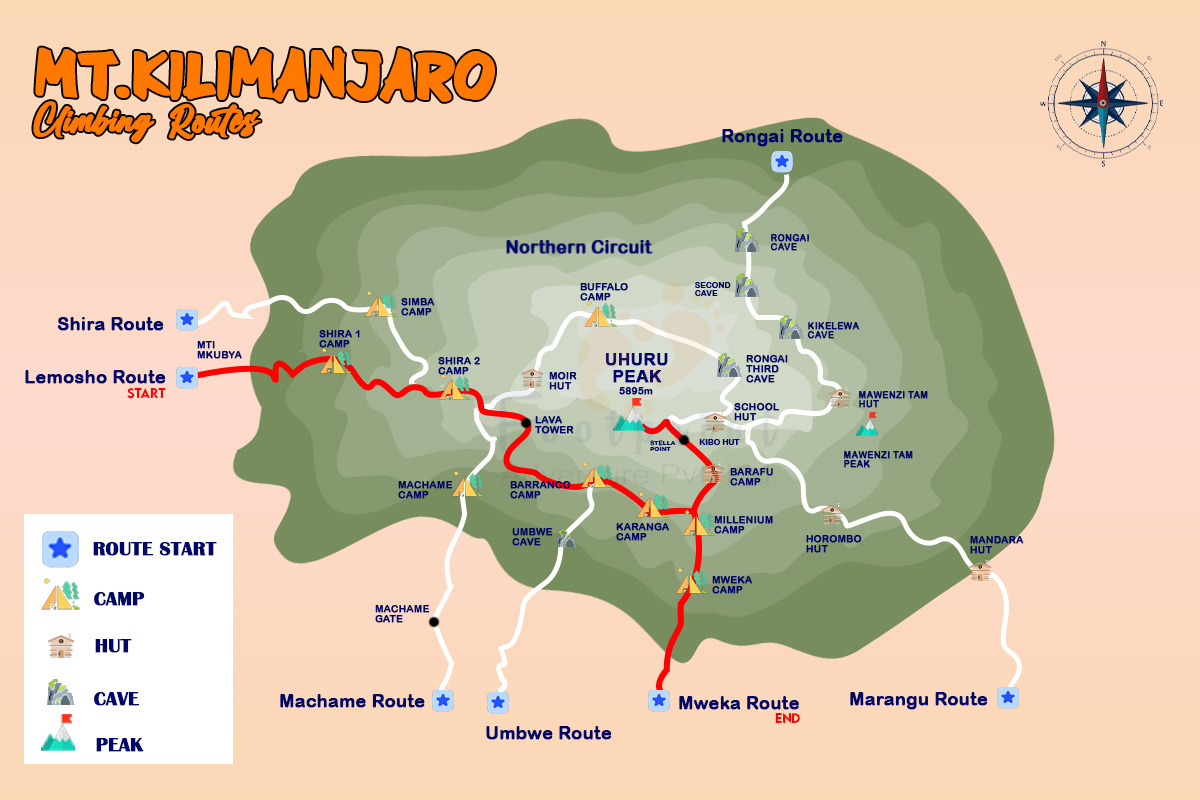
Benefits of the Ultimate 10-Day Itinerary:
- Better Acclimatization: With extra time to adjust to the altitude, you’ll feel stronger and more prepared for the summit push.
- Reduced Fatigue: Shorter trekking days and rest stops make the journey less exhausting.
- Scenic Exploration: Spending more time on the trail provides extra opportunities to take in Kilimanjaro's breathtaking scenery, from lush rainforests to the alien-like alpine desert.
Weather & Climate
An African country located on the southern equator of the world offers a diverse climatic environment that depends on the elevation, and geographical structure of a particular place and season during the entire year. Normally on coastal sides, the temperature remains humid and hot and tropical weather prevails. While the northern side remains cold and the high altitude area becomes more chilled across the year. The central part of Tanzania remains dry and arid throughout the year.
Food in Tanzania
This African country offers a variety of local, international, and continental cuisine. The local cuisine has been widely influenced by several cultures, people, and flavors as there are about 120 ethnic groups along with people from Asia, and Europe who also lived there. The normal meals from Tanzania include local products like rice, wheat, corn, beans, cabbage, varieties of nuts, banana, mango, pineapple, and coconut. The taste of the Tanzanian foods is amazing and mouth-watering along with nutritious, healthy, and fresh as well. The popular local food in Tanzania is Ugali which is a staple food served during both lunch and dinner.
Ugali, Maandazi, Vitumbua, Wali wa Nazi, Supu ya Ndizi, Nyama Choma, Pilau, Chapati Bread, Mchemsho, Ndizi Nyama, Wali na Maharage, Mchuzi wa Samaki, Mishkaki, Date Nut Bread, Sweet Potato Pudding, Mchicha, Makubi, Coconut Bean Soup, Mkate wa Sinia, Vibibi are the some of the most popular and delicious foods in Tanzania which you must try when you are in Tanzania.
Hydration
- Drinking enough water is essential to combat dehydration and altitude sickness.
- Your trekking team will boil and filter water daily, but bringing a reusable water bottle and purification tablets is recommended for added safety.
The variety and quality of food ensure that climbers remain nourished and energized, even during the toughest parts of the trek.
Popular Full Moon Climb
Mt. Kilimanjaro climbing is popular on full moon days. So, travelers patiently wait to make the trip during this period in the high season. Climbing during the full moon day brings the bright moonlight that illuminates the nearby surroundings with the glittering glacier. Also, you can see the magical views of Mt. Kino with more visibility during the full moon day. Also, another important reason for climbing Africa’s tallest mountain during the full moon is due to its glows that enhance the insights of the Kilimanjaro trekking passes and especially during your summit attempt.
Accommodation on the Lemosho Route
Accommodations on the Lemosho Route are put in place for comfort and shelter against the elements of the mountain.
- Tents:
- Weatherproof, double-layer tents are set up at each camp. These can withstand heavy rain, strong winds, and freezing temperatures.
- Typically, tents accommodate two people, allowing for a sense of companionship and warmth.
- Campsites:
- Each camp—like Big Tree Camp, Shira Camp, and Barafu Camp—is strategically located to allow for rest and acclimatization.
- Camps offer stunning views of the surrounding landscapes, from lush rainforests to rocky alpine deserts.
- Facilities:
- Some operators provide dining tents for mealtime comfort, especially during cold evenings.
- Portable toilets may be available, depending on your trekking package.
- Sleeping Gear:
- A warm, four-season sleeping bag rated for extreme cold is essential.
- An insulated sleeping mat enhances comfort and warmth, especially at higher altitudes.
The combination of sturdy equipment and well-planned campsites ensures a restful experience, helping climbers conserve energy for the next day’s trek.
Fitness & Altitude Sickness
There is no doubt that Kilimanjaro climbing is challenging and you’ll hike up to high-altitude climbing. To make the journey successful, your fitness level should be normal, you should be able to walk around 5-7hr every day at a normal pace. You may feel your pace could be slow due to the higher elevation which is normal in high mountains. But it is essential for a safe and successful ascent. Prior hiking and trekking in high mountains would be additional support for your successful ascent.
Regarding altitude sickness, this is a very obvious situation when you are in high mountains. To avoid such a condition, you must acclimatize your body when needed and drink enough water while hiking up. You should follow all the necessary guidance from your climbing guide which will be helpful from AMS ( Acute Mountain Sickness). You can use some medicines such as Diamox (acetazolamide) to avoid mountain sickness.
Key Details About the Lemosho Route
Kilimanjaro Lemosho Route Distance
Thus, the total distance of the Lemosho Route is approximately 70 km (43.5 miles). This is done gradually over a 8 to 10 days and this will enable your body to adapt easily.
Lemosho Route Success Rate
The Lemosho Route is, for this reason, marked with a high success rate especially because of the long routes it offers. Those that take 8 days or 10 days have above 90% success rates so this is one of the most successful routes of Kilimanjaro.
Lemosho Route Map
Think you can begin your climb from the western side, cross the Shira Plateau, join the southern elevation and then hike from Barafu camp to Uhuru peak. It is crucial to have a map in order to get an idea of this amazing route and the kind of land you are going to cross.
Lemosho Route Kilimanjaro 10 Days
For those seeking the ultimate experience, the 10-day Lemosho Route is a fantastic option. With two extra days to acclimatize, you’ll have an even better chance of reaching the summit comfortably.
Practical Tips for Kilimanjaro Climbing from Lemosho Route
- Training: Prepare with cardio, strength training, and long hikes to build endurance. For detailed training plan, click here.
- Packing: Bring quality gear, including layered clothing, waterproof items, and sturdy boots.
- Hydration: Drink plenty of water to stay hydrated and aid acclimatization.
- Diet: Eat well during the climb. Your team will provide nutritious meals to keep you energized.
- Listen to Your Guides: Follow their advice on pacing and acclimatization to maximize your chances of success.
How Hard is the Lemosho Route on Kilimanjaro?
The Lemosho route is rated as moderate difficulty in comparison with other routes up the Kilimanjaro. It covers altitude, the daily distances and treks, the variation in the pace and the general ruggedness of the land. Nonetheless, the longer circuits 8-10 days and make it one of the most successful and easy routes to the top as a result of slow climbing.
Here are a few factors that contribute to its difficulty:
1. Altitude
The route takes you to Kilimanjaro's summit at 5,895 meters (19,341 feet) above sea level, which poses a risk of altitude sickness. However, the Lemosho Route’s gradual ascent and additional acclimatization days significantly reduce this risk.
2. Daily Hiking Time
Hikers spend 5 to 8 hours trekking per day, with summit day requiring 12–15 hours of strenuous effort. The long summit night, combined with freezing temperatures and thin air, is the most challenging part of the climb.
3. Terrain
The Lemosho Route offers diverse landscapes, including rainforest, moorland, and rocky alpine desert. The Barranco Wall, a steep rock scramble, can be intimidating but is manageable with guidance from experienced guides.
Who Can Do It?
With proper preparation, most people in good health and physical condition can successfully complete the Lemosho Route. Training focused on endurance, leg strength, and cardio, coupled with mental determination, will help you conquer the challenges.
How Long is the Lemosho Route to Kilimanjaro?
The Lemosho Route covers approximately 70 kilometers (43.5 miles) from the trailhead to the summit and back to the exit gate. The distance is spread over 8 to 10 days, depending on the chosen itinerary.
Key Highlights of the Route:
- Lemosho Gate to Big Tree Camp: 6 km (3.7 miles)
- Big Tree Camp to Shira 1 Camp: 8 km (5 miles)
- Shira 1 Camp to Shira 2 Camp: 7 km (4.3 miles)
- Shira 2 Camp to Lava Tower to Barranco Camp: 10 km (6.2 miles)
- Barranco Camp to Karanga Camp: 6 km (3.7 miles)
- Karanga Camp to Barafu Camp: 4 km (2.5 miles)
- Barafu Camp to Summit and Back to Mweka Camp: 17 km (10.5 miles)
- Mweka Camp to Mweka Gate: 10 km (6.2 miles)
The 70 km includes ascents and descents, making it a comprehensive trekking experience through Kilimanjaro’s varied ecosystems.
Tips for Preparing Your Kilimanjaro Lemosho Route Climb
- Physical Training:
- Incorporate cardio, strength training, and long hikes with a loaded backpack.
- Focus on endurance to prepare for summit day’s 12–15-hour trek.
- Mental Preparation:
- Stay positive and determined, especially during challenging stretches like the Barranco Wall or summit night.
- Packing Essentials:
- Layered clothing, waterproof gear, sturdy trekking boots, and gloves are must-haves.
- Don’t forget sunscreen, sunglasses, and a hat for UV protection at higher altitudes. For detailed information, click here.
- Altitude Acclimatization:
- Spend extra days on the mountain if possible. The slower you ascend, the better your body adjusts.
- Nutrition and Hydration:
- Eat well and drink plenty of water to maintain energy and combat altitude sickness.
- Team Selection:
- Choose a reputable trekking company with experienced guides and ethical porter practices.
Preparation is key to a successful and enjoyable Kilimanjaro climb via the Lemosho Route.
Why Book Your Kilimanjaro Climb with Us?
The right tour operator is essential to climb safely and enjoyably, which is why we stand out with the following features:
- Experienced guides, thoroughly knowledgeable about the Lemosho Route.
- Good equipment and food for your comfort.
- Excellent customer service throughout-from inquiry to the summit.
Ready for this great adventure? Hiker or novice, this is one Kilimanjaro climb via the Lemosho Route that you will always remember. Let's do it together!
Climbing the Kilimanjaro Lemosho Route in 2025/26
Planning to climb the Lemosho Route in 2025/26 is an excellent decision, as it allows ample time for preparation and aligns with optimal trekking seasons.
- Booking Early:
- Book your place with a reliable operator well in advance, as Kilimanjaro is still one of the most popular destinations.
- Best Seasons:
- June–October and December–February are the dry and best seasons.
- Be prepared for colder temperatures during summit nights, especially in December or January.
- Cost Planning:
- Budget for trekking fees, gear rental, travel insurance, and tips for guides and porters.
- Global Conditions:
- Stay updated on travel requirements, including visas, vaccinations, and health precautions.
Climbing the Lemosho Route in 2025/26 will present the chance to enjoy one of the most famous treks in the world, building memories to last.

